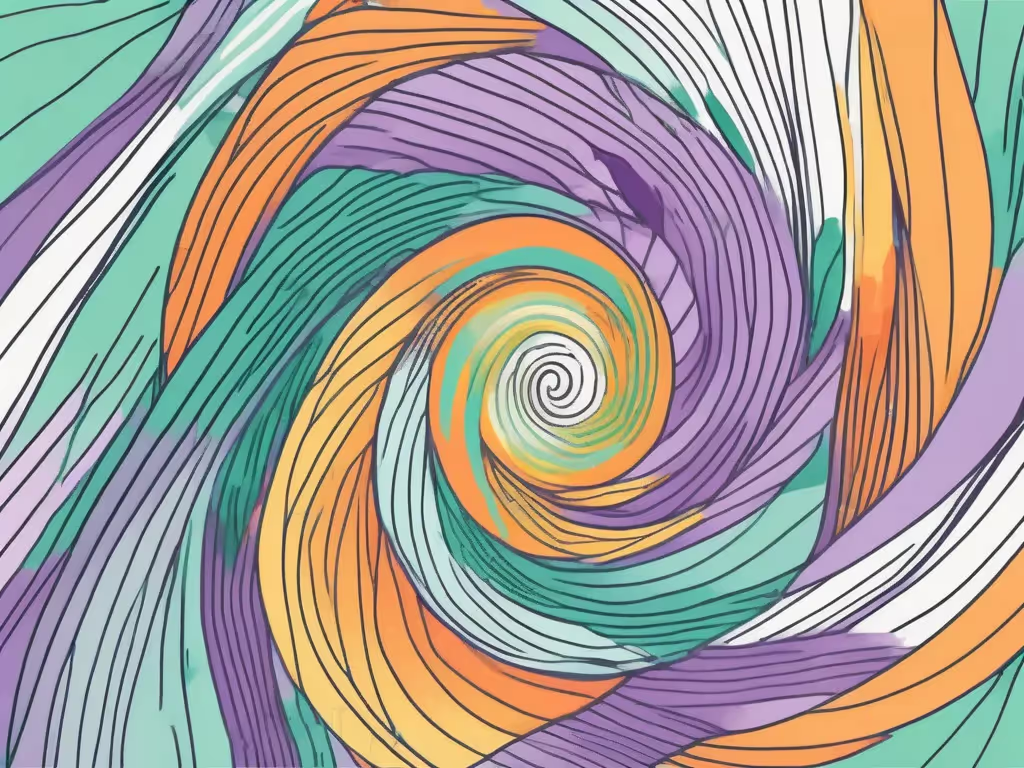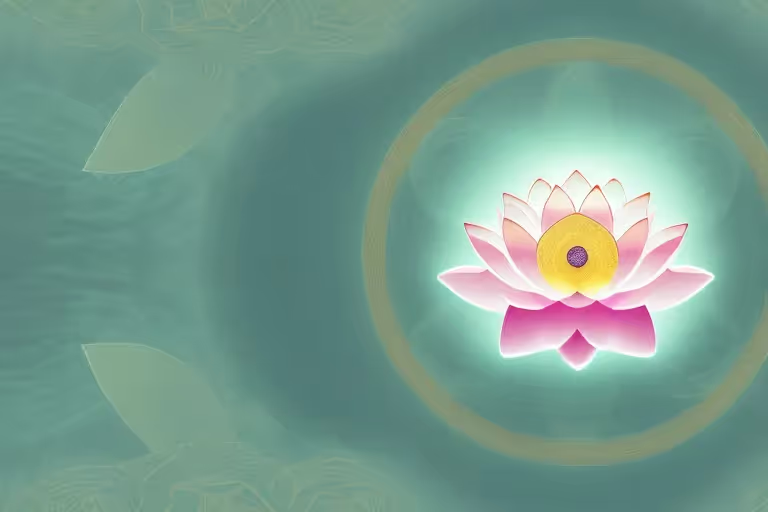Sufi Whirling, also known as Sama or Whirling Dervishes, is a form of physically active meditation which originated among Sufis, and which is still practiced by the Sufi Dervishes of the Mevlevi order. It is a symbolic ritual through which dervishes (also known as semazens) aim to reach the source of all perfection, or kemal. This is sought through abandoning one's personal desires, by listening to the music, focusing on God, and spinning one's body in repetitive circles, which has been seen as a symbolic imitation of planets in the Solar System orbiting the sun.
As part of our comprehensive glossary on meditation, we delve into the depths of this fascinating practice, exploring its origins, significance, steps, and impact on the practitioner's mind and body. We hope this serves as a detailed guide for those interested in understanding and possibly adopting this meditative practice.
Origins of Sufi Whirling
The practice of Sufi whirling is believed to have been introduced by Rumi, a 13th-century Persian poet, Islamic jurist, and theologian. His poems have been widely translated into many of the world's languages and transposed into various formats. Rumi has been described as the "most popular poet" and the "best selling poet" in the United States.
Sufi whirling is one of the most emblematic practices of Sufism, the mystical branch of Islam. Sufism emphasizes the inward search for God and shuns materialism. The whirling is part of the formal Sama ceremony and the participants are properly trained to perform in public.
Significance of Rumi in Sufi Whirling
Rumi’s poetry forms the basis of much of the Sufi music and dance traditions. And it’s his words that the Sufi dancers listen to in music as they whirl. The practice of Sufi whirling was a way for Rumi to not only come closer to God but also to philosophically and physically embody the divine secrets of the universe.
His influence on the practice is so profound that the terms 'Whirling Dervishes' and 'Rumi' often go hand in hand. His teachings and practices have been carried forward by the Mevlevi Order, a Sufi order founded in Konya (in present-day Turkey) by the followers of Jalal ad-Din Muhammad Balkhi-Rumi.
Understanding the Practice
Sufi Whirling is not just a dance or a form of meditation, but a journey inwards, a way to connect with the divine, a practice of devotion and love. The entire act of whirling is symbolic and contains a lot of spiritual meanings.
The semazen (the one who whirls) conveys God's spiritual gift to those who are witnessing the Sema. Revolving from right to left around the heart, the semazen embraces all humanity with love. The human being has been created with love in order to love.
Symbolism in Sufi Whirling
The semazen's camel's hair hat (sikke) represents the tombstone of the ego; his wide, white skirt represents the ego's shroud. By removing his black cloak, he is spiritually reborn to the truth. At the beginning of the Sema, by holding his arms crosswise, the semazen appears to represent the number one, thus testifying to God's unity.
While whirling, his arms are open: his right arm is directed to the sky, ready to receive God's beneficence; his left hand, upon which his eyes are fastened, is turned toward the earth. The semazen conveys God's spiritual gift to those who are witnessing the Sema. Revolving from right to left around the heart, the semazen embraces all humanity with love.
Steps in Sufi Whirling
The Sema ceremony starts with a chanted prayer to the Prophet Mohammed and all the Prophets before him. This is followed by a drumbeat symbolizing God’s order to the Creation, “Be.” An instrumental improvisation follows this and then the Sultan Veled walk, a three-part procession around the turning space. The Sema itself is then begun.
The Sema consists of several stages with different meanings. The semazen will remove his black cloak to be spiritually reborn to truth, his hands are open as he spins, his right hand directed to the sky ready to receive God’s beneficence, looking to his left hand turned toward the earth. He will then make a series of bows exchanging greetings with the chief semazen and they begin to turn around each other. Each part of the ceremony follows a strict order and is full of symbolism.
Preparation for Sufi Whirling
Before the whirling begins, participants engage in a series of prayers and songs. The semazens stand with their arms crossed, representing the unity of God. They are dressed in long white robes, a black cloak, and a tall brown hat, which are all symbolic. The black cloak represents the ego's tombstone and the tall hat represents the ego's tombstone.
The semazens then cast off the black cloak, symbolizing their liberation from the worldly attachments and desires. They start to revolve slowly, with their arms open wide, the right palm facing upwards towards heaven and the left palm facing downwards towards earth, symbolizing the cycle of life and the continuity of existence.
Impact of Sufi Whirling
Sufi Whirling has a profound impact on the mind and body of the practitioner. The act of whirling creates a sense of deep connection with the divine and brings about a state of spiritual ecstasy. The practitioner often loses his sense of self and merges with the universe, experiencing a deep sense of peace and tranquility.

Physically, the act of whirling increases the flow of blood to the brain, which can lead to a heightened state of awareness and consciousness. The constant spinning also improves balance and coordination, and can have a calming effect on the mind, reducing stress and anxiety.
Physical Benefits
The physical benefits of Sufi Whirling are numerous. The act of spinning on one's own axis is not only a good workout for the body, but it also improves balance and coordination. The continuous spinning stimulates the vestibular system in the inner ear, which is responsible for maintaining balance in the body. This can lead to improved spatial awareness and better physical stability.
Moreover, the rhythmic movement and the focus required to maintain balance during the spinning can have a calming effect on the mind, reducing stress and anxiety. It can also increase blood flow to the brain, which can lead to a heightened state of awareness and consciousness.
Mental and Spiritual Benefits
On a mental and spiritual level, Sufi Whirling can lead to a deep state of meditation and spiritual ecstasy. The act of spinning is said to induce a trance-like state, where the practitioner loses their sense of self and feels a deep connection with the universe. This can lead to a profound sense of peace and tranquility, and a feeling of being at one with the divine.
Furthermore, the practice of Sufi Whirling can lead to a deep sense of personal growth and self-understanding. As the practitioner spins, they are encouraged to contemplate on their life and their relationship with the divine. This can lead to a greater understanding of oneself and one's place in the universe.
Conclusion
In conclusion, Sufi Whirling is a deeply spiritual practice that has been passed down through generations. It is a form of active meditation that involves spinning in repetitive circles, symbolizing the planets orbiting the sun. The practice is steeped in symbolism and meaning, and has a profound impact on the practitioner's mind and body.

Whether you are interested in Sufi Whirling as a form of physical exercise, a method of stress relief, or a path to spiritual enlightenment, it is a practice that offers numerous benefits and a unique perspective on the relationship between the human and the divine.



.webp)






.avif)

%20(1).avif)


.avif)
.avif)
.webp)


.avif)


















































































































.avif)

















.svg)









